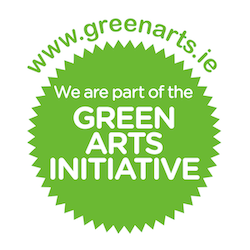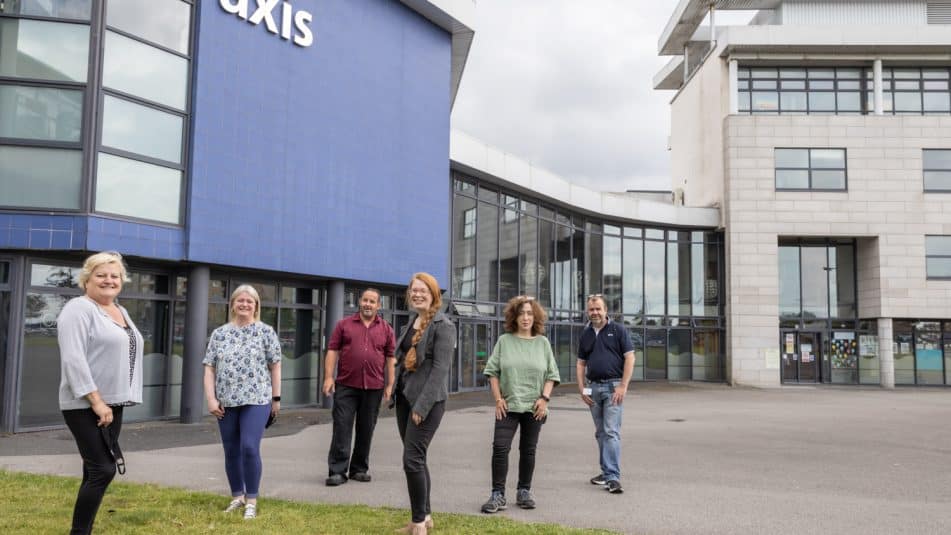

The Greening Venues Pilot Project began just before the pandemic in February of 2020. Not surprisingly, it came to a fairly abrupt halt once the venues closed the following month and continued in fits and starts into 2022.
The principal aim of the Pilot Project was to give venues an overview of their environmental impacts, including baseline energy usage and to give them recommendations or a range of options that they could consider to become more environmentally sustainable.
The initial call invited venues to submit an expression of interest to take part in the project. Seven were selected: Pavilion in Dun Laoghaire, axis in Ballymun, Hawk’s Well Theatre in Sligo, Town Hall Theatre and An Taibhdhearc in Galway, Visual in Carlow and Belltable in Limerick.
WE MEASURED:
- Energy – Heating & Cooling
- Energy – Electricity
- Energy – Efficiencies / Awareness
- Waste and Waste Management
- Water Usage
- Carbon Footprint – Energy & Waste
WE GATHERED INFORMATION ON:
- Suppliers & Procurement
- Biodiversity
- Travel & Transport: Business Travel/Touring
- Travel – Staff Commuting & Audiences
The data we collected allowed us to measure the Greenhouse Gases associated with the energy use of each venue, as illustrated below:

The 7.5% reduction in CO2e emissions in 2019 resulted largely from the increased amount of renewable electricity on the national grid rather than any significant reduction in usage by these seven venues.
The seven venues varied in size, capacity, and activity levels. Some buildings were historic, dating from the 19th Century, and the newest was just over a decade old. Consequently, there was a big variation in the energy usage and associated emissions of the different organisations.
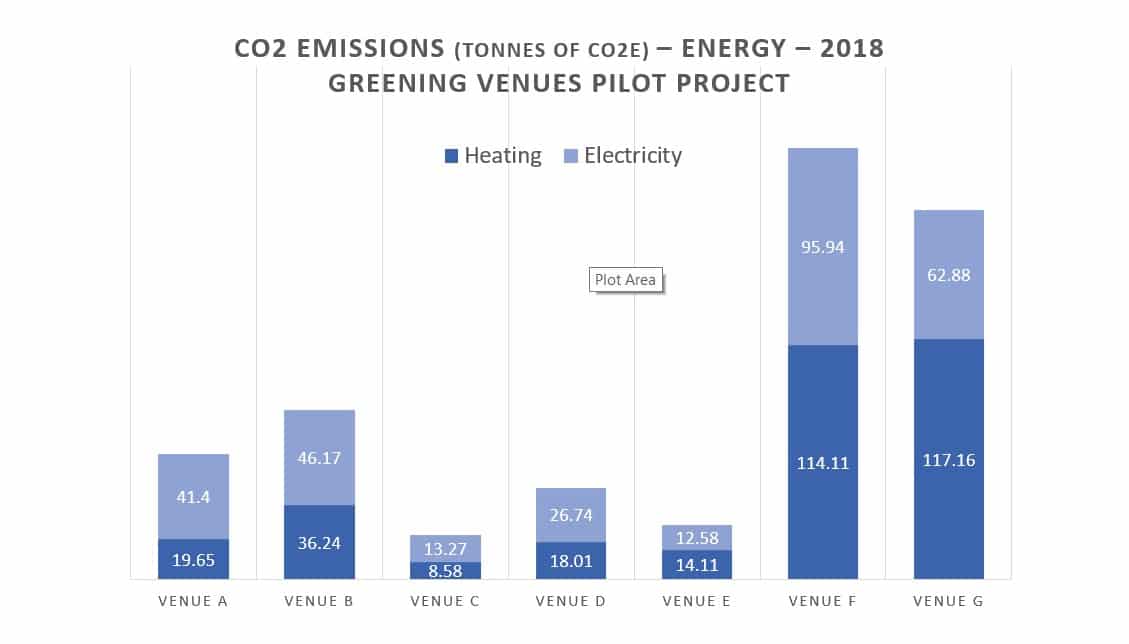
Reducing the GHG emissions associated with energy is easier to achieve with electricity than with heating, where that heating is being provided by fossil fuels such as oil or gas. There is a range of approaches available for organisations to address electricity emissions:
- Sign up for a 100% Green Tariff with a reputable electricity supplier
- Initiate a campaign with staff teams and building users to turn off lights and equipment when not in use.
- Install LED building lighting, and, where possible, LED stage lamps
- Install sensor lighting systems in corridors, toilets and store rooms to reduce wastage
- Replace defunct equipment with more energy efficient versions
- Install Solar PV Panels on the roof and create renewable electricity
But decarbonising a building’s heating is much more challenging. Behavioural change can achieve some reduction in usage – reducing the thermostat and adapting to cooler temperatures is one option, as is investing in improved zoning and better building fabric. But replacing a heating system fuelled by fossil fuels with, for example, a heat pump, is expensive and complicated.
The fabric of the buildings was poor in five out of seven venues. In general, these buildings were not airtight leading to a lot of heat being wasted.
WASTE:
Many venues have done a lot to reduce their waste. Where we could get the data (only four venues could supply us with this information), we analysed the carbon footprint of waste as well as energy. Interestingly, for most, waste formed a small part of the overall GHG emissions – less than 5% of the total carbon footprint.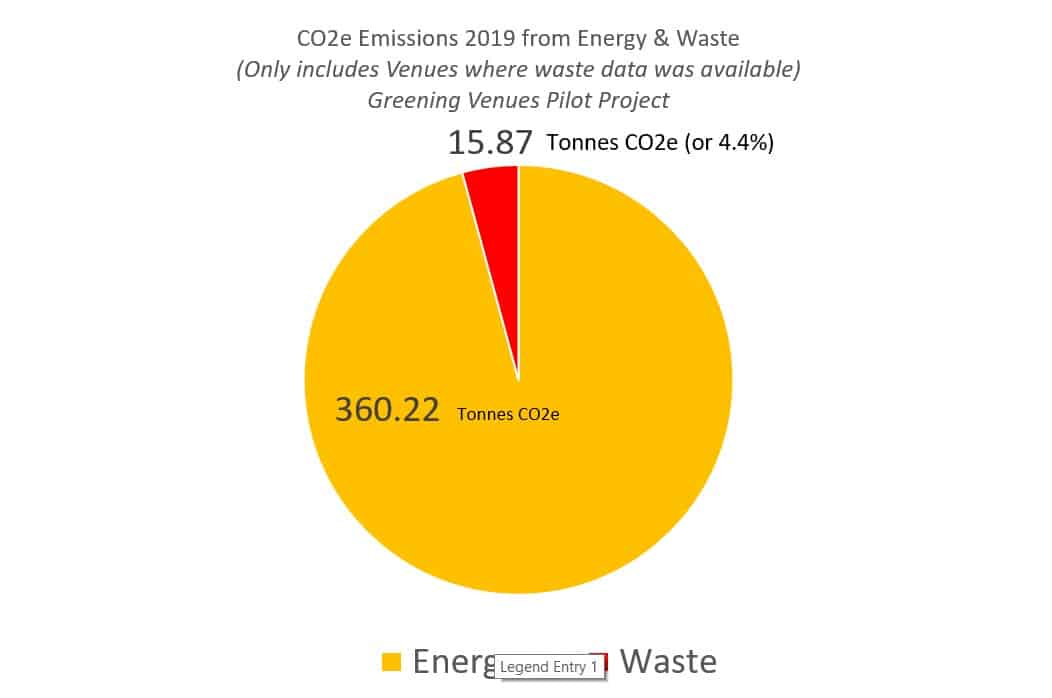
In order to calculate the emissions associated with your waste, you need to ensure that your waste contractor is providing you with the details in terms of weight of waste for each stream (general waste, recyclables, and organic waste – or brown bin). Measuring your waste will allow you to set a target for reduction.
There are undoubted improvements in waste disposal in these venues, but challenges remain around disposables, particularly in the bar. Three of the four venues who could provide waste data showed that their General Waste had reduced between 2018 and 2019, and three out of four had improved their recyclable rates. Taking part in this project, incentivised many of the participating venues to install brown bins in their buildings – a very important step.
OTHER FINDINGS:
- There is great enthusiasm in all of the venues to develop more sustainable ways of running their buildings and reducing their carbon footprint.
- All of the participating venues had addressed their environmental impacts, some going so far as to create green teams. But there is plenty of potential for increased ambition across all impacts.
- There is great potential for venues/theatres/arts centres to play a significant role leading on tackling climate change.
TRAVEL:
Business travel is a small part of the carbon footprint of these organisations. Public transport was used for travel purposes by most venues, but not for all trips. No venue had detailed analysis of audience travel, so all evidence gathered was anecdotal. Not surprisingly, car travel was cited as being the most popular mode of travel given that most performances take place in the evening.
- Anecdotally, the numbers of patrons and staff using cycling to get to these venues was small. There seem to be so many impediments to cycling…
- Facilities for cyclists were very mixed, both for staff and audience members but generally parking for bicycles was inadequate, particularly for anyone wanting to avoid the rain and concerned about the security of their bicycles. Some venues did have Coca Cola bike schemes located nearby.
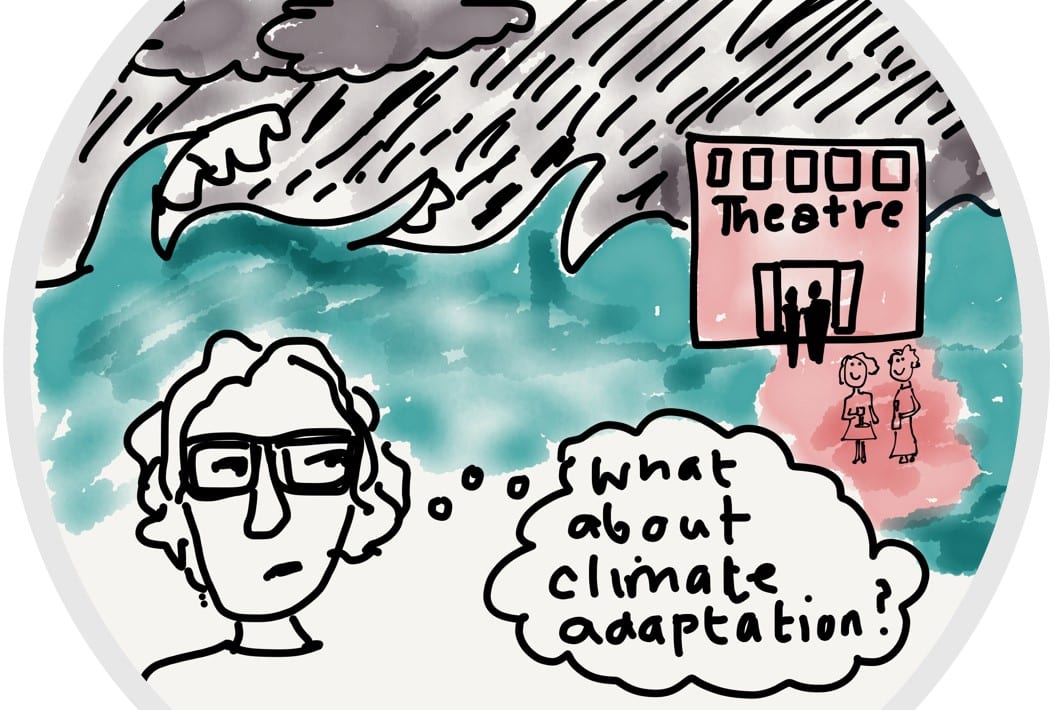
Drawing by Lisa Fingleton
CLIMATE ADAPTATION:
Climate Adaptation was an issue that had been addressed by only one venue. Increasingly, we will need to be prepared to deal with the effects of a changing and changed climate. As with many things in life, being prepared for certain eventualities means that they are less frightening when they happen. We need to build resilience in all of our organisations and communities – in the arts sector and without.
This post allows for a very brief summary of the findings which emerged from this pilot project. In addition to the analysis of energy usage and its associated carbon footprint, five of the venues received detailed reports covering water usage, biodiversity, and stakeholder engagement, as well as lists of recommendations specific to each organisation which could guide them on their journey to becoming more environmentally sustainable.
With sincere thanks to all those in the seven participating venues who took part in this project!
